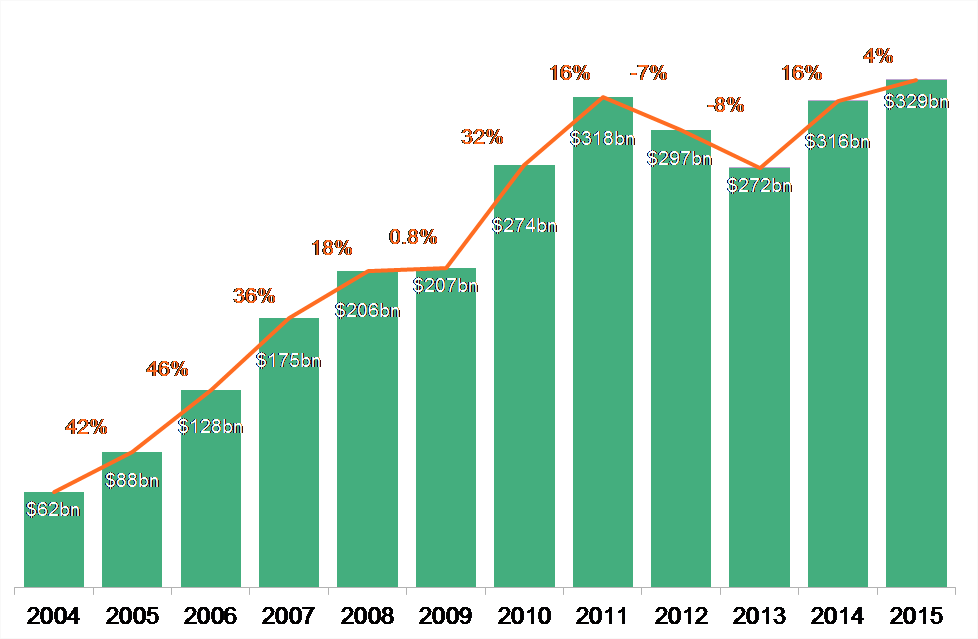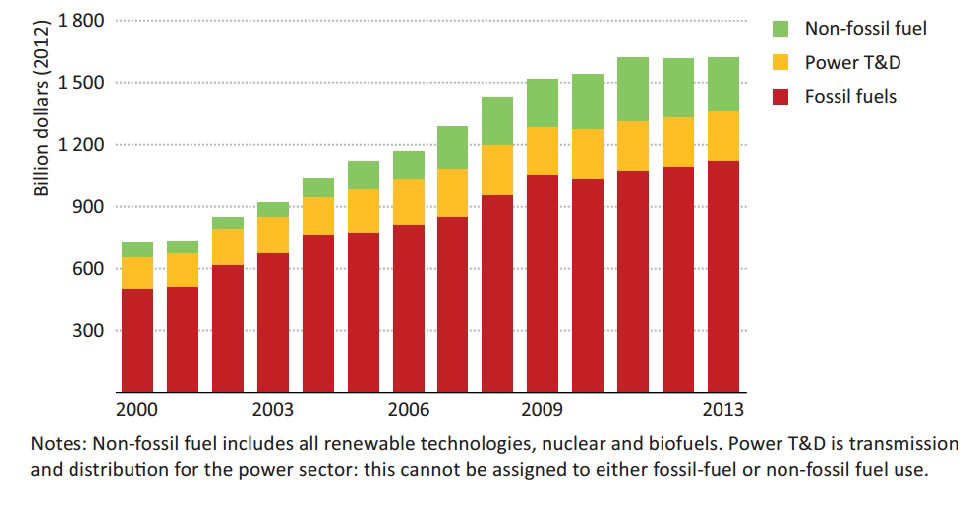Ugo Bardi
 Image source. "Back of the Envelope" calculations are a tradition in science and often turn out to be able to provide
Image source. "Back of the Envelope" calculations are a tradition in science and often turn out to be able to provideplenty of useful information, at the same time avoiding the common pitfall of complex models, that of being able to fit
anything provided that one has enough adjustable parameters.
The world's economy can be seen as a giant heat engine. It consumes energy, mainly in the form of fossil fuels, and uses it to produce services and goods. No matter how fine-tuned and efficient the engine is, it still needs energy to run. So, if we want to do the big switch that we call the "energy transition" from fossil fuels to renewables, we can't rely just on efficiency and on energy saving. We need to feed the big beast with something it can run on, energy produced by renewable sources such as photovoltaics (PV) and wind in the form of electric power.
Here are a few notes on the kind of effort we need in order to move to a completely renewable energy infrastructure before it is too late to avoid the double threat of climate disruption and resource depletion. It is a tall order: we need to do it, basically, in some 50 years from now, possibly less, otherwise it will be too late to avoid a climate disaster. So, let's try a "back of the envelope" calculation that should provide an order of magnitude estimate. For a complete treatment, see this article by Sgouridis et al.
Let's start: first of all, the average power generation worldwide is estimated as around 18 TW in terms of primary energy. Of these, about 81% is the fraction generated by fossil fuels, that is 14.5 TW. This can be taken as the power that we need to replace using renewable sources, assuming to leave everything else as it is.
We need, however, also to take into account that these 14.5 TW are the result of primary energy generation, that is the heat generated by the combustion of these fuels. A lot of this heat is waste heat, whereas renewables (excluding biofuels) directly generate electric power. If we take into account this factor, we could divide the total by a factor of ca. 3. So, we may say that we might be able to keep the engine running with 5 TW of average renewable power. This may be optimistic because a lot of heat generated by fossil fuels is used for indoor heating, but it is based on the idea that civilization needs electricity more than anything else in order to survive. In terms of indoor heating, civilization survives even if we turn down the thermostat, wear a multi-layer of wool, and light up a small wood fire.
Renewable installations are normally described in terms of "capacity", measured in "peak-Watt" (Wp), that is the power that the plant can generate in optimal conditions. That depends on the technologies used. Starting from the NREL data, a reasonable average capacity factor a mix of renewables can be taken as about 20%. So, 5 TW of average power need 25 TWp of installed capacity. We need to take into account many other factors, such as intermittency, which may require storage and/or some spare power, but also better efficiency, demand management, and storage. On the whole, we may say that these requirements cancel each other. So, 25 TWp can be seen as a bare minimum for survival, but still a reasonable order of magnitude estimate. Then, what do we have? The present installed renewable capacity is ca. 1.8 TWp; around 7%. Clearly, we need to grow, and to grow a lot.
Let's see how we have been doing so far. (The values in the figure below appear to exclude large hydropower plants, which anyway have a limited growth potential).

As you can see, we have been increasing the installed power every year. According to Bloomberg, the installed capacity reached about 134 GWp in 2015. If this value is compared with the IRENA data, above, we see that the growth of installations is slowing down. Still, 134 GWp/year is not bad. The renewable energy industry is alive and doing well, worldwide.
Now, let's go to the core of the matter: what do we need to do in order to attain the transition, and to attain it fast enough? (*)
Clearly, 130 GWp/year, is not enough. At this rate, we would need two centuries to arrive at 25 TWp. Actually, we would never get there: assuming an average lifespan of the plants of 30 years, after 30 years we would stabilize around 4 TWp and all the new installations would be used to replace the old plants as they wear out. But we could get to 25 TWp in 30 years if we could reach and maintain an installation rate of 800 GWp per year, about 6 times larger than what we are doing today. (note that this doesn't take into account the need of replacing old plants but, if we assume an average lifetime of 30 years, the calculation remains approximately valid from now to 2050.)
We may not need to reach 100% renewable power by 2050; 80% or even less than that may be enough. In such case, we could make it with something like 500 GWp/year; still a much larger rate than what we are doing today. And if we manage to arrive to - say - even just 50% renewable power by 2050, then we will have created a renewable juggernaut that will lead to 100% in a relatively short time. On the other hand, as I said before, 25 TWp may be optimistic. Therefore, we may need installation rates of the order of at least 1 TWp/year or even more. On the whole, I'd say that 1TWp/year is as good as it can be as an order of magnitude estimate of the energy needed for the survival of civilization as we know it. Approximately a factor of 8 higher than what we have been doing so far.
This back of the envelope calculations arrives at results compatible to those of the more detailed calculations by Sgouridis et al. That study makes more stringent and detailed assumptions, such as the need of increasing the supply of energy for a growing human population, a lower capacity factor, the need of a gradual build-up of the production facilities, the need of oversized capacity to account for intermittency, the energy yield of the plants (*) and more. In the end, it arrives at the conclusion that we need to install at least 5 TWp per year for a successful transition (and, by the way, that, if we do so, we can avoid crossing the 2 degrees C warming threshold). That's certainly more realistic than the present calculation, but let's stay with this scribbled envelope as a minimalistic approach. Let's say that, in order for civilization to survive, we need to install 1 TWp per year, how much would that cost?
Let's see how much we have been spending so far, again from Bloomberg:

Image from Bloomberg Global clean energy investment 2004-15, $bn
As you can see, investments in renewable energy were rapidly increasing up to 2011, then they plateaued with the value for 2015 only marginally higher than it was in 2011. However, if we compare with the previous figure, we see that we have been getting more Watt for the buck. In part, it is because of previously made investments, in part because of the improvements in renewable technologies that have reduced the cost per kWp. But note that technological improvements tend to show diminishing returns. The cost of renewable energy in terms of watt/dollar has gone down so fast and so much that from now on it may be difficult to attain the same kind of radical improvements, barring the development of some new, miracle technology. Take also into account that technological improvement may be offset by the increasing costs of the mineral resources needed for the plants.
We said that we need to increase the installation rate of about a factor of 8 in energy terms. Assuming that the cost of renewable energy won't radically change in the future, we need to increase monetary investments of about the same factor. It means that we need to go from the present value of about 280 billion dollars per year to some 2 trillion dollars/year. This is a lot of money, but not an unthinkable: investment rate. If we sum up what we are investing for fossils (about $1 trillion/year), for renewables ($300 billions/year) and nuclear (perhaps around $200 billions/year) we see that we are not far from there, as we can see in the image below. The total amount yearly invested in the world for energy supply is about 2% of the Gross World Product, today totaling about US$78 trillion.

And there we are. The final result of this exercise is, I think, to frame the transition as a "mind-sized" model (to use a term coined by Seymour Papert). Basically, it turns out that, barring technological miracles, a smooth transition from fossils to renewables is probably impossible; simply because the current way of seeing humankind's problems makes it impossible even to conceive such a massive shift of investments as it would be needed (noting also that investments in renewables have not been significantly increasing from 2011 - that's bad).
This calculation also tells us that it is not unthinkable to advance in the right direction and attain a transition that would allow us to maintain at least some of the features of the present civilization. That is, if we are willing to invest in renewable energy, our destiny is not necessarily that of going back to middle ages or to hunting and gathering (or even to extinction, as it seems to be a fashionable future in certain circles). The transition will be rough, it will be difficult, but it will not necessarily be the Apocalypse. Some kind of transition is unavoidable, anyway: fossil fuels just have no future. But civilization may still have a future: all the investments in renewable energy we can manage to make today for the transition will make the difference for the future. This is a choice that we can still make.
(*) Note: In this simplified calculation, I haven't specified where the energy needed for building the new infrastructure will come from and I haven't used the concept of EROEI (energy return on energy invested). It is taken into account in detail in the calculations by Sgouridis et al in terms of the concept of the "Sower's Strategy", that is assuming that fossil fuels provide the necessary energy during the initial stages of the transition, then they are gradually replaced by renewable energy.